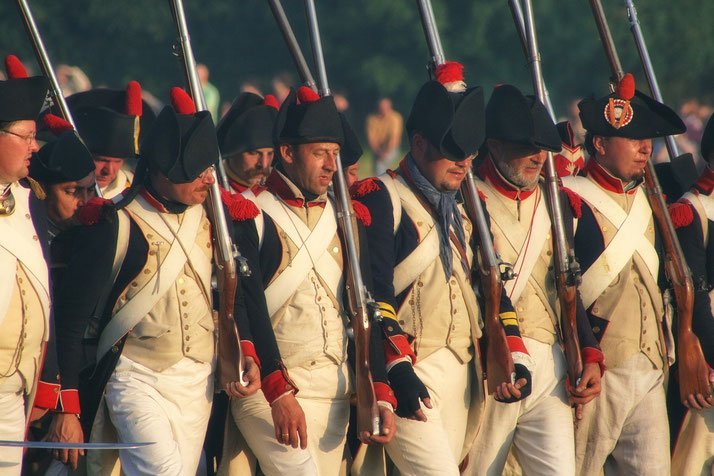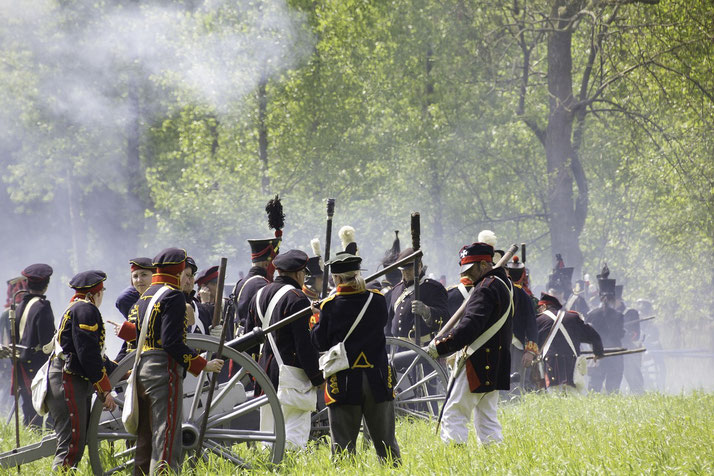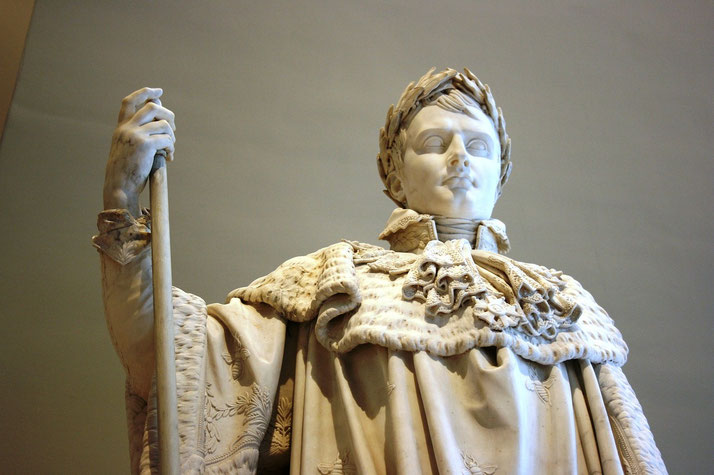Why the Battle of Austerlitz was Napoleon's greatest triumph

On a fog-shrouded morning in December 1805, a remarkable clash of empires unfolded on the rolling hills of Austerlitz, forever altering the course of European history.
The Battle of Austerlitz, also known as the Battle of the Three Emperors, pitted the strategic genius of Napoleon Bonaparte against the combined might of the Russian and Austrian armies, led by Tsar Alexander I and Emperor Francis II.
The outcome of this epic struggle would not only cement Napoleon's reputation as one of history's greatest military commanders but also reshape the political landscape of an entire continent.
What was the Battle of Austerlitz?
The Battle of Austerlitz took place on December 2, 1805, near the modern town of lavkov u Brna.
It took place during the Napoleonic Wars and pitted the forces of the French Empire against the combined armies of Russia and Austria.
The primary cause of the Battle of Austerlitz was the escalating conflict between Napoleon Bonaparte's French Empire and the Third Coalition, an alliance formed by Russia, Austria, and several other European powers to oppose French expansion.
Napoleon's military successes and territorial ambitions had disrupted the delicate balance of power in Europe, causing alarm among the traditional ruling dynasties.
These nations banded together in an effort to curb Napoleon's influence and restore the status quo.
In 1805, the Third Coalition launched a military campaign against France, with Russia and Austria taking the lead. Napoleon, in response, swiftly mobilized his Grand Army to engage the enemy forces.
Who were the 'Three Emperors'?
At the heart of the Battle of Austerlitz were three powerful rulers: Napoleon Bonaparte of France, Tsar Alexander I of Russia, and Emperor Francis II of Austria.
Napoleon, a brilliant tactician and ambitious leader, sought to expand his empire and influence throughout Europe.
In contrast, Tsar Alexander I and Emperor Francis II aimed to halt Napoleon's advances and preserve the balance of power among European nations.
The battle earned its moniker as the "Battle of the Three Emperors" due to the direct involvement of these influential leaders.
The differing strengths of the two sides
The French army, commanded by Napoleon himself, consisted of approximately 65,000 to 75,000 well-trained and highly motivated soldiers.
Key French commanders included Marshal Michel Ney, Marshal Jean Lannes, Marshal Nicolas Soult, and Marshal Louis Davout, each of whom played crucial roles in the battle.
On the opposing side, the combined Russian and Austrian forces numbered around 85,000 to 90,000 troops.
Tsar Alexander I and Emperor Francis II were present on the battlefield, with General Mikhail Kutuzov serving as the primary Russian commander and General Karl Mack von Leiberich commanding the Austrian troops.

How did each side plan to win the clash?
Napoleon's strategy at Austerlitz revolved around deception and exploiting his enemies' mistakes.
He deliberately weakened his center, luring the Russians and Austrians into attacking, while maintaining strong flanks.
Once the enemy committed to their assault, Napoleon planned to launch powerful counterattacks to encircle and crush their forces.
This tactic, known as the "center-peel", relied on precise timing, coordination, and the element of surprise.
The Russian and Austrian commanders, meanwhile, sought to overwhelm the French by concentrating their forces in a massive assault on Napoleon's center.
They believed that by breaking through the French lines, they could cut off Napoleon's escape route and secure a decisive victory.
The battlefield and weather
The battlefield at Austerlitz was characterized by several key geographic features that played a significant role in the battle's outcome.
The most prominent of these was the Pratzen Heights, a strategic hill that dominated the landscape and provided an advantageous position for whichever side held it.
Additionally, the terrain featured marshes, streams, and small villages, which added complexity to troop movements and formations.
The battlefield's geography and topography influenced the strategies and tactics employed by both the French and the Russo-Austrian forces.
Weather conditions on the day of the battle also played a crucial role in the unfolding of events.
The morning of December 2nd was shrouded in a dense fog, which obscured visibility and concealed the positions and movements of both armies.
The fog provided Napoleon with an opportunity to execute deceptive maneuvers and deploy his troops without detection by the enemy.
As the fog lifted later in the day, the true disposition of the French forces was revealed, catching the Russo-Austrian army off guard.
The dramatic day of battle
As dawn broke on December 2, 1805, the dense fog shrouded the battlefield, hiding Napoleon's deceptive maneuvers from the Russo-Austrian forces.
Napoleon had deliberately weakened his center, luring his adversaries into attacking this vulnerable position while maintaining strong flanks.
Tsar Alexander I and Emperor Francis II took the bait, ordering their combined armies to focus their assault on the French center.
The battle began with the Russo-Austrian forces launching a massive assault on the French center, as Napoleon had anticipated.
As the enemy pressed their attack, Napoleon sprung his trap. Marshal Davout's troops stormed the Pratzen Heights, capturing this strategic hill and splitting the enemy forces.
The French now held the high ground, giving them an advantageous position to launch further attacks.

Simultaneously, French forces under Marshal Soult counterattacked the weakened enemy center, routing the Russian troops and causing significant casualties.
To the north, Marshal Lannes successfully held off Austrian attacks on the French right flank.
These simultaneous actions effectively crushed the coalition forces' offensive and left their armies in disarray.
Seeing their center collapsing and their forces being encircled, the Russo-Austrian commanders desperately tried to regroup and launch a counteroffensive.
However, it was too late. Napoleon's forces pushed on relentlessly, decimating the remaining enemy troops and forcing them to retreat or surrender.
How much did each side lose?
The French army suffered approximately 9,000 killed or wounded, while the Russian and Austrian forces sustained much heavier losses, with estimates ranging from 25,000 to 36,000 killed, wounded, or captured.
This significant disparity in casualties further highlighted the effectiveness of Napoleon's strategy and the skill of the French military.
The losses for the Russian and Austrian armies not only weakened their ability to continue fighting in the immediate aftermath but also had lasting implications for their nations' military and political stability.
In contrast, the relatively low casualties sustained by the French army allowed Napoleon to maintain his momentum and continue his campaign across Europe.

Aftermath and significance of the battle
The victory forced Austria to sue for peace, resulting in the Treaty of Pressburg, which ceded territory and influence to France.
Furthermore, the Holy Roman Empire, a political institution that had persisted for over a thousand years, was effectively dissolved in the wake of the battle, paving the way for the rise of the French Empire.
The battle also cemented Napoleon's reputation as a military genius and further established French dominance in Europe.
In the years since the battle, military historians and strategists have studied Austerlitz to glean insights into effective tactics, leadership, and the art of war.
As a result, the Battle of Austerlitz remains an important touchstone in the study of military history and continues to captivate the imaginations of those interested in the epic conflicts of the past.
What do you need help with?
Download ready-to-use digital learning resources
Copyright © History Skills 2014-2024.
Contact via email
With the exception of links to external sites, some historical sources and extracts from specific publications, all content on this website is copyrighted by History Skills. This content may not be copied, republished or redistributed without written permission from the website creator. Please use the Contact page to obtain relevant permission.





